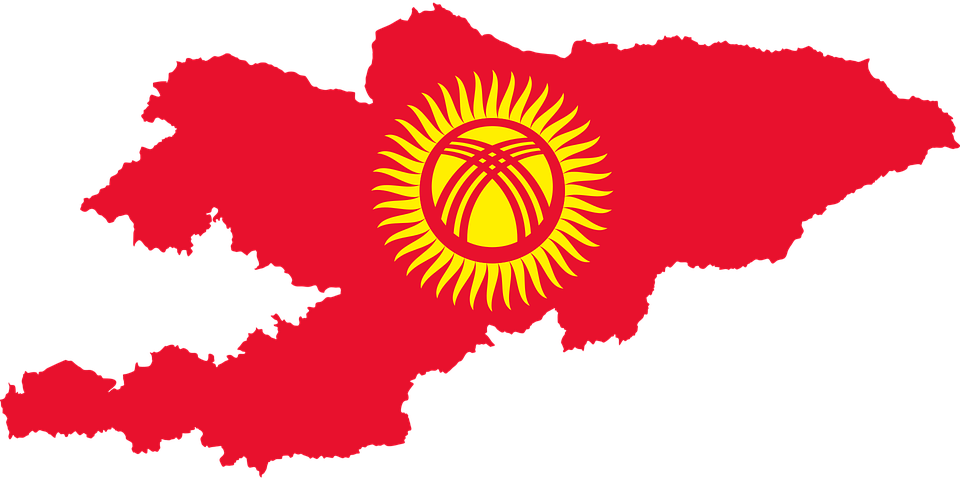After the 9-11 attacks the United States hardened primary targets inside the country, followed by increasing protection for secondary ones. In the global environment today governments and private risk analysts spend a lot of time discussing relations and threats among the great powers, but there are secondary areas that are also critical and in need of attention. These are the relationships among the peripheral states that strategically sit at the edge of trade routes and are almost as important as the major powers themselves. They tend to possess a disproportionately small share of the wealth of core states such as China, Russia, the US and West Europe, and have weaker political institutions that can subject them to undue foreign influences.
Kyrgyzstan is such a peripheral state located on the shortest route connecting China to Central Asia, and beyond that, to the Middle East and Europe. The name of its president, Sadyr Japarov, like the country is not familiar to most westerners. He wants to change that now. Akipress Press reports that Japarov traveled to Beijing for meetings from February 3-6 with leaders from several other Central Asian peripheral states. They negotiated an agreement with China to improve cooperation on infrastructure and transit development. Japarov expects it to result in the start of construction of its part of the strategic China–Kyrgyzstan–Uzbekistan railway line by the end of this year. The agreement follows the September 14 signing of an earlier document in which China agreed to fund and conduct a railway feasibility study.
During his election campaign in January 2022, Japarov called for nationalizing the Kumtor mine, one of the largest gold mines in the world; settling border disputes with neighboring Uzbekistan and Tajikistan; and completing the China–Kyrgyzstan–Uzbekistan railway as his top foreign policy priorities, according to Fozil Mashrad of the Jamestown Foundation. To date, he has made progress on all his objectives. Early last year, the “Kyrgyzstani government reached a formal settlement with Canadian mining company Centerra over the nationalization of Kumtor, which had been bogged down in corruption and environmental disputes for more than two decades. Full control of the mine and its gold export revenues will significantly increase the country’s economic and financial independence,” notes Mashrad. Earlier this year, during Uzbekistani President Shavkat Mirziyoyev’s state visit to Bishkek, both leaders made progress toward the ratification of a historic border demarcation agreement between the two neighbors. The relationship, now considered a comprehensive strategic partnership, was once feared as potentially conflict-prone territory by the governments of Kyrgyzstan, Uzbekistan and Tajikistan.
That leaves Japarov free to pursue Chinese help in building the railway network. Eurasianet reports it is believed that China, Kyrgyzstan and Uzbekistan have settled all technical issues related to the construction of the railway line, including considerations on the railway’s route inside Kyrgyzstani territory and the size of the railway track gauge. These represent major wins for China in this peripheral region. It leaves only the funding mechanism in question. It’s an area in which China is eager to “help.” Mashrad says that Chinese engineers have already set up offices in Bishkek and are active on the ground. Railway construction can begin after the feasibility study is completed in June. He adds that “Once the railway line is completed, it will not only bring hundreds of millions in transit revenue to Kyrgyzstan but will also turn the country from landlocked to land-linked, connecting the East with the West.”
Strategically this secures Kyrgyzstan as a critical link in China’s transportation supply line to the Middle East and Europe, and redefines and expands Bishkek’s geopolitical power not only in Central Asia but also throughout wider Eurasia. Japarov is not stopping with the railway. He is scheduled to travel to Iran and Pakistan later this year to discuss potential regional transit corridors links connecting Kyrgyzstan to seaports for global maritime trade.
As an offer of goodwill Iranian authorities have allocated a plot of land at the Port of Bandar Abbas for Kyrgyzstan and pledged to share its scientific and technological achievements and expertise. While at first trade may sound positive, Tehran includes in this “sharing” knowledge of advanced military technologies that could upset the fragile balance among the Central Asian states. One online newspaper, 24.kg, reported in February that both Tehran and Islamabad are “supplying various military equipment and arms, including drones, to Tajikistan, currently Kyrgyzstan’s regional rival.”
The peripheral states of Central Asia have long desired to connect the Iran’s and Pakistan’s seaports. The new northern railway networks linking the region are of increasing significance to Russia as they pass through Russian territory. The situation in the Central Asian states is stable at the moment and marks progress toward the goals of Kyrgyzstan’s president. The area, however, remains a potential flashpoint as trade and potentially military equipment will be able to move quickly from East to West. Japarov is in position to achieve his foreign policy goals and for Kyrgyzstan to grab the attention of the major powers. Hopefully, that occurs before something goes astray.
Daria Novak served in the U.S. State Dept.
Illustration: Pixabay
